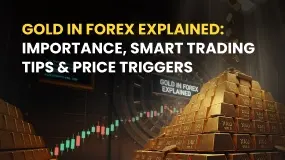简体中文
繁體中文
English
Pусский
日本語
ภาษาไทย
Tiếng Việt
Bahasa Indonesia
Español
हिन्दी
Filippiiniläinen
Français
Deutsch
Português
Türkçe
한국어
العربية
IMF Adds Bitcoin and Digital Assets to Global Economic Statistics for the First Time
Abstract:IMF’s inclusion of digital assets in economic statistics redefines how nations track and assess the crypto market’s impact.

The International Monetary Fund (IMF) has taken a historic step by officially recognizing digital assets within its global economic reporting framework. This move marks the first time that cryptocurrencies and blockchain-based assets have been formally incorporated into the IMFs global economic statistics.
Released on March 20, the new guidelines are part of the seventh edition of the Balance of Payments and International Investment Position Manual (BPM7). The manual updates global statistical standards that were last revised in 2009, reflecting the rapid evolution of digital finance and the increasing adoption of cryptocurrencies worldwide.
Comprehensive Classification of Digital Assets
One of the major highlights of the updated manual is the structured classification of digital assets. The IMF categorizes digital assets into two main types: fungible and non-fungible tokens (NFTs). Further, the classification hinges on whether the assets carry associated liabilities.
For instance:
• Bitcoin and similar cryptocurrencies without any underlying liabilities are classified as non-produced nonfinancial assets. These are categorized under the capital account, and any cross-border transactions involving these assets are recorded as acquisitions or disposals of non-produced assets.
• Stablecoins and similar digital currencies backed by liabilities are treated as financial instruments.
• Platform-based tokens like Ethereum and Solana may be considered equity-like instruments if held across borders, signifying ownership similar to traditional stocks.
Implications for Crypto Mining and Staking
The manual also introduces guidelines on staking and crypto yield activities, categorizing them as income-generating services. Depending on the holders intention and the scale of their holdings, staking income may be treated as a form of dividend income.
Additionally, services related to crypto mining and staking are now recognized as exportable computer services, aligning with the broader trend of treating digital economy activities as export-oriented services. This shift acknowledges the growing importance of blockchain technology as part of the global digital economy.
Global Adoption and Future Implementation
The IMF collaborated with over 160 countries and the IMF Committee on Balance of Payments Statistics (BOPCOM) to develop this framework. The goal is for countries to widely adopt these new standards by 2029–2030. To support this transition, the IMF will offer technical assistance and guidance to ensure smooth implementation.
The IMFs adoption of digital assets into global statistics is a significant milestone for the crypto industry. It means that countries now have a standardized way to track and manage digital assets, helping governments and financial institutions to better understand their impact on the economy.
Disclaimer:
The views in this article only represent the author's personal views, and do not constitute investment advice on this platform. This platform does not guarantee the accuracy, completeness and timeliness of the information in the article, and will not be liable for any loss caused by the use of or reliance on the information in the article.
Read more

INZO Broker MT5 Review 2025: A Trader's Guide to Features, Fees and Risks
INZO is a foreign exchange (Forex) and Contracts for Difference (CFD) brokerage company that started working in 2021. The company is registered in Saint Vincent and the Grenadines and regulated offshore. It focuses on serving clients around the world by giving them access to popular trading platforms, especially MetaTrader 5 (MT5) and cTrader. The company offers different types of trading instruments, from currency pairs to cryptocurrencies. It aims to help both new and experienced traders. Read on to know more about it.

INZO Broker No Deposit Bonus: A 2025 Deep Dive into Its Offers and Risks
Traders looking for an "inzo broker no deposit bonus" should understand an important difference. While this term is popular, our research shows that the broker's current promotions focus on a $30 welcome bonus and a 30% deposit bonus, rather than a true no-deposit offer. A no-deposit bonus usually gives trading funds without requiring any capital from the client first. In contrast, welcome and deposit bonuses often have rules tied to funding an account or meeting specific trading amounts before profits can be taken out. This article gives a complete, balanced look at INZO's bonus structure, how it operates, and the major risks shown by real trader experiences. Read on!

Why Bitcoin Is Falling?
Bitcoin (BTC) plunged to $104,288 on Tuesday, extending its decline for a second consecutive session and breaking below the critical 200-day moving average. The selloff follows the worst October in a decade.

Gold in Forex Explained: Importance, Smart Trading Tips & Price Triggers
Gold is represented by the XAU/USD pair in the global forex market, reflecting the value of one ounce of gold against the US dollar. Here, XAU represents gold, while USD is obviously the US dollar. Gold acts as a commodity, and the dollar remains the primary currency in this pair. Forex traders use this pair to trade and invest in gold price fluctuations.
WikiFX Broker
Latest News
Axi Review: A Data-Driven Analysis for Experienced Traders
INZO Regulation and Risk Assessment: A Data-Driven Analysis for Traders
GGCC Bonus and Promotions: A Data-Driven Analysis for Experienced Traders
Close Up With WikiFX —— Take A Close Look At Amillex
CapEx Spending On AI Is Masking Economic Weakness
Questrade Review Pros, Cons and Regulation
AccentForex Review: Is It Safe to Invest or Scam?
Cleveland Fed's Hammack supports keeping rates around current 'barely restrictive' level
Delayed September report shows U.S. added 119,000 jobs, more than expected; unemployment rate at 4.4%
The CMIA Capital Partners Scam That Cost a Remisier Almost Half a Million
Currency Calculator



